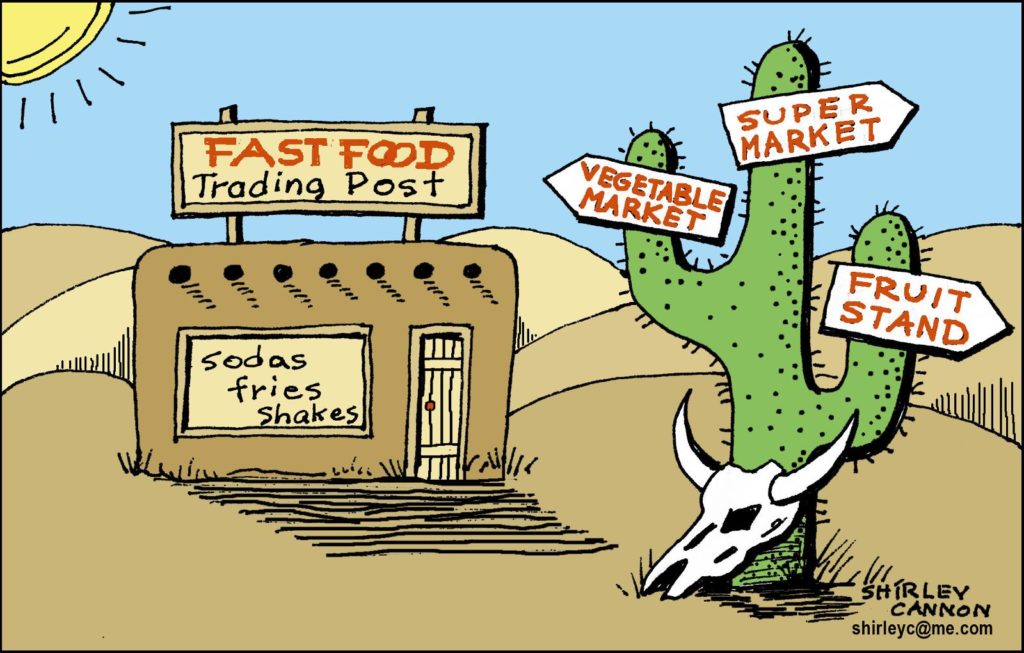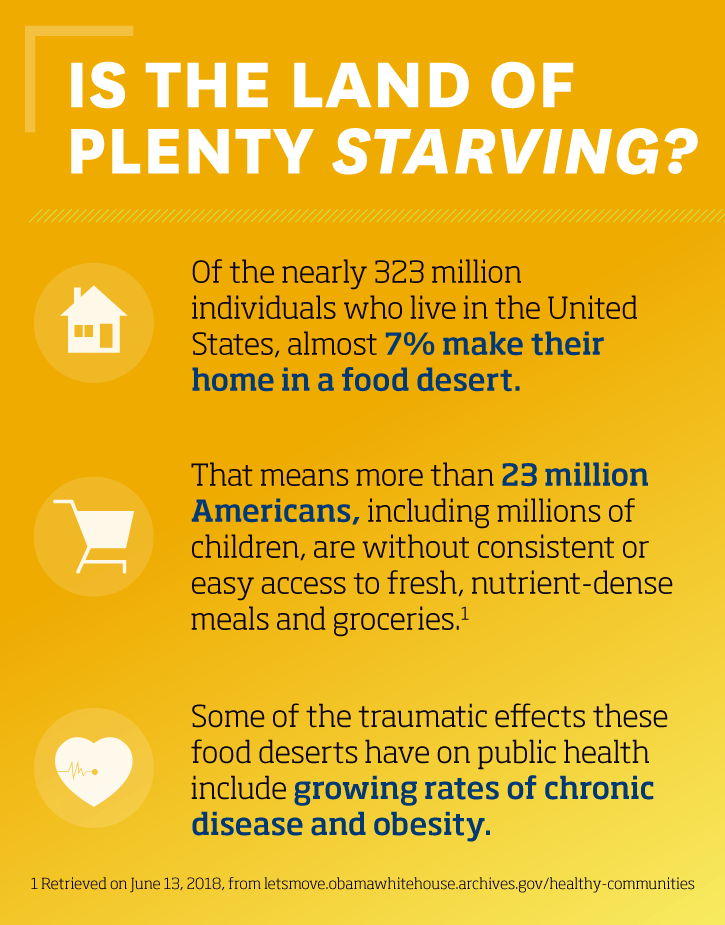
What is a Food Desert?
What is the first thing that comes to mind when you hear the term “food desert”?
Rural areas with tumble weeds blowing through?
Isolated cities with nothing in a 60-mile radius?
Radiator Springs?
While these descriptions are what a food desert can look like, they are not a prerequisite to qualify for the category. The definition of food deserts “are geographic areas where access to affordable, healthy food options (aka fresh fruits and veggies) is limited or nonexistent because grocery stores are too far away” (DoSomething.org). The USDA defines food deserts by being 1 mile from a grocery store in urban areas and 10 miles in rural areas. Limited access to fresh food creates higher risks for health problems and obesity rates.
There are a reported 23.5 million people living in food deserts in the US, and this number could be an inaccurate estimate because it does not include every person living in areas with “corner grocery stores” that mainly sell prepackaged food.

Wyoming has at least 12 areas that have been identified as food deserts and they include areas in Carbon, Goshen, and Fremont counties, just to mention a few.
Wyoming Food Bank of the Rockies (WFBR) has resources to help those who live in food deserts. One resource WFBR uses is Mobile Pantries. The Mobile Pantry Program is a resource used to provide fresh fruit and veggies, and food in general, to those Wyomingites who live in areas with limited access to supermarkets.
Rock River, Wyoming is 40 miles away from the nearest grocery store and the last time the town saw any supermarket was in 1974, almost 40 years ago. One resident shared the impact the Mobile Pantries have on the town and its residents, and how much they appreciate the fresh food that comes for the food bank.
Food deserts are a major problem in America and Wyoming Food Bank of the Rockies is working hard to eradicate the need. The access to fresh and healthy food is a must for every individual to not only survive, but to thrive.



